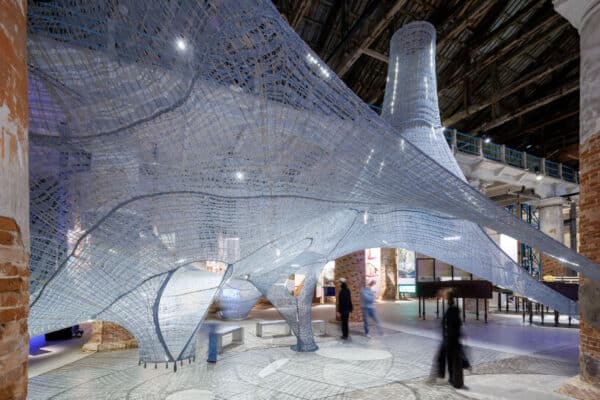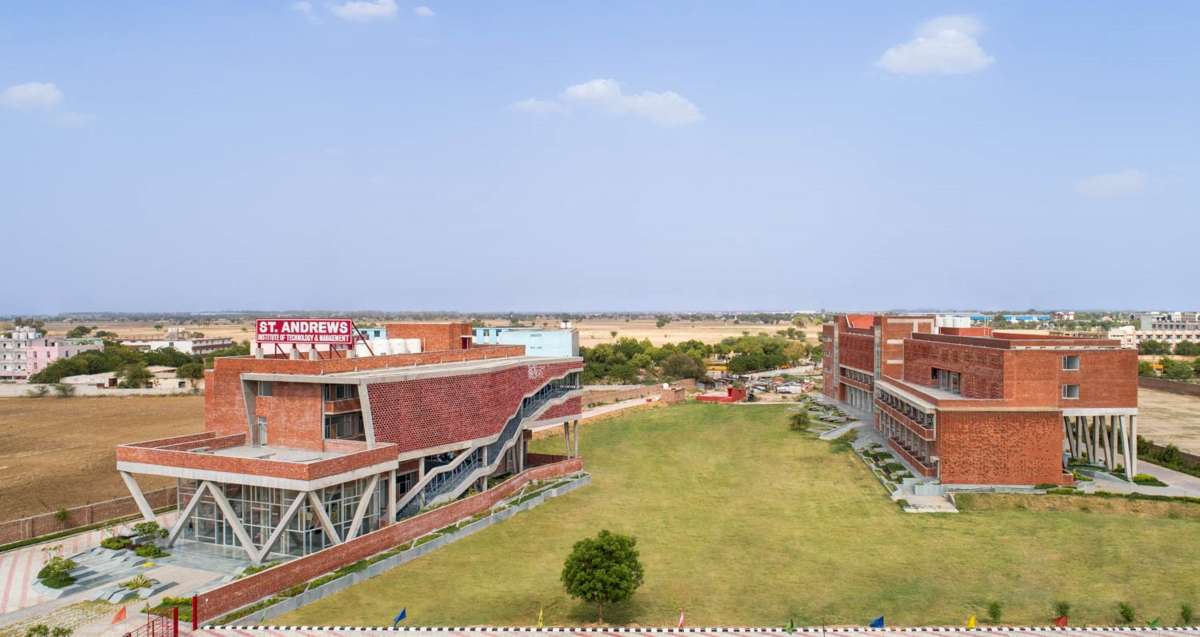Necto: A Three-Dimensional Natural Fibers Installation at Venice Biennale 2025
When you walk into Venice’s Arsenale during the 2025 Architecture Biennale, you immediately experience something unique—Necto. This installation explores three-dimensional natural fibers in a way that pushes architecture toward sustainability and innovation. It combines lightness with strength, inviting visitors to engage with the space differently, and showcases the possibilities of these fibers.
The Location and Idea Behind Necto
Located in a historic venue, the design team led by SO–IL, along with structural engineer Dr. Mariana Popescu and TheGreenEyl, created Necto to reflect both tradition and cutting-edge technology. The installation runs from May 10 to November 23, 2025. By binding space and materials together, including the utilisation of three-dimensional natural fibers, the team aimed to create a structure that people could easily assemble, disassemble, and reuse, embracing circular material strategies.
Moreover, the name “Necto,” which means “to bind” in Latin, perfectly expresses the project’s intent: to weave architectural form, materials, and sustainability into one seamless experience.





Structural Design and Materials
Necto features three distinct yet connected elements, all made from 3D-knitted natural fibers produced through digital knitting techniques. The design team carefully chose these fibers for their balance of strength and flexibility. By integrating three-dimensional natural fibers, the team ensured the elements would efficiently serve their purpose while maintaining aesthetic quality.
| Element | Description | Purpose |
|---|---|---|
| Cone | Dynamic funnel-like shape | Filters light and defines space |
| Column-like Form | Vertical textile pillar | Provides structural balance |
| Suspended Canopy | Soft, floating textile mass | Offers shaded enclosure |
The team relied on computational design to optimise tension across the knitted surface. As a result, Necto achieves remarkable stability without adding unnecessary weight or bulk. This approach reduces material waste, which further aligns with the project’s sustainability goals.
Furthermore, the entire structure hangs delicately from the ceiling trusses and anchors firmly to existing columns, creating a floating effect that feels both organic and futuristic.
Innovative Materials and Sustainability
What truly distinguishes Necto is the treatment of its materials. The natural fibers receive a selective coating of a bio-based, translucent stiffening agent. This process stiffens specific zones while allowing others to remain flexible. Consequently, the surface shifts elegantly between tensile and semi-solid states, further showcasing the versatility of three-dimensional natural fibers.
In addition, the installation incorporates light-responsive threads woven into the fabric. These threads subtly react to changing illumination, breathing life into the structure. Equally fascinating, the team integrated a DNA-based data encoding system into the fibers themselves. This cutting-edge technology embeds important information about the materials, enabling future tracking and analysis.
Such innovations demonstrate how architecture can blend biology and technology to create smarter, more sustainable buildings.
Easy Transport and Circular Use
Necto’s design prioritizes ease of transport and reuse. The team packed the entire structure into compact containers, making shipping efficient and reducing carbon footprint. Once onsite, workers reassembled it using lightweight, manual tools instead of heavy machinery.
| Feature | Details |
|---|---|
| Transport Method | Compact, efficient containers |
| Installation Method | Lightweight, manual assembly |
| Post-Exhibition Plan | Full disassembly and reuse |
| Site Impact | Zero |
As a result, Necto leaves no lasting impact on the historic site. After the exhibition, the installation will come apart and prepare for future reuse, perfectly embodying circular material strategies.
A Collaborative Research Effort
The project brings together expertise from multiple disciplines. Architects, engineers, and material scientists from institutions like TU Delft, ETH Zurich, and the Technical University of Munich collaborated closely.
This interdisciplinary teamwork transformed Necto into a real-world research case study. They explored how temporary textile architecture can become more adaptive, sustainable, and traceable through bio-based materials.
Why Necto Matters Today
In today’s world, where the construction sector faces pressure to reduce waste and environmental impact, Necto offers a hopeful example. It challenges traditional notions of permanence and material use by showing how structures can be lightweight, reusable, and intelligent.
Furthermore, Necto’s strategies have broad applications—from temporary pavilions and urban interventions to innovative interior designs and even product design.
In Conclusion
Necto, with its innovative use of three-dimensional natural fibers, selective material stiffness, and smart data integration, tells a compelling story of how architecture can evolve. It demonstrates that buildings don’t have to be heavy, permanent, or wasteful—they can be adaptive, beautiful, and environmentally responsible.
ArchUp is your platform to follow everything “architectural“ It offers news, analyses, and designs straight from the heart of the modern architectural movement.







